Mastering Docker Volumes: Efficient Data Management in Containers
 SWATHI PUNREDDY
SWATHI PUNREDDY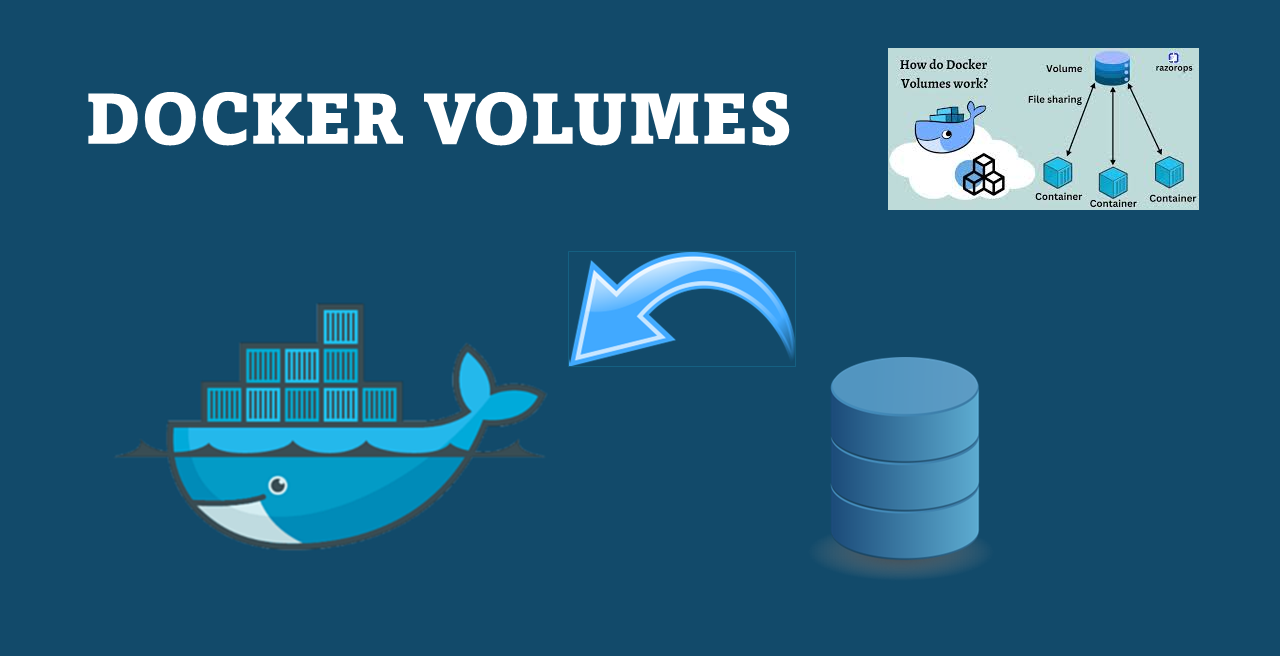
Unlocking the Power of Persistent Storage in Containerized Environments
Introduction
In the realm of containerization, Docker has emerged as a prominent tool for packaging, distributing, and running applications within lightweight, isolated environments called containers. One of the key challenges in containerized environments is managing data persistence effectively. Docker volumes offer a robust solution to this challenge by providing a mechanism for storing and managing data separately from the container itself. In this blog post, we'll explore Docker volumes in detail, including their types, use cases, best practices, and a practical example demonstrating their usage with MySQL.
Table of Contents
Understanding Docker Volumes
Types of Docker Volumes
Using Docker Volumes
Creating Volumes
Mounting Volumes
Managing Data with Volumes
Docker Volume Drivers
Best Practices for Using Docker Volumes
Example: Using Docker Volumes with MySQL
Conclusion
1. Understanding Docker Volumes
Docker volumes are a Docker feature that enables data persistence and sharing between containers and the host system. Unlike bind mounts, which link a directory on the host with a directory in the container, volumes are managed by Docker and stored in a location within the Docker environment. Volumes are independent of the container lifecycle, meaning they persist even after the container is stopped or removed.
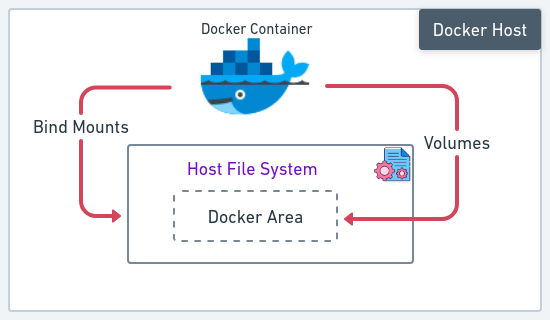
2. Types of Docker Volumes
Docker supports several types of volumes, each designed to address specific use cases:
Named Volumes: Created and managed by Docker. They have a user-friendly name and are stored in a location managed by Docker, typically within the
/var/lib/docker/volumesdirectory.Host Volumes: Also known as bind mounts, these link a directory on the host machine with a directory in the container, providing direct access to files and directories on the host system.
Anonymous Volumes: Automatically created by Docker and not given a user-friendly name. They are primarily used for temporary or disposable data.
3. Using Docker Volumes
Creating Volumes
Docker volumes can be created using the docker volume create command followed by the desired volume name. For example:
docker volume create my_volume
Mounting Volumes
Volumes can be mounted into containers using the -v or --mount flag when running a container. For example:
docker run -d -v my_volume:/path/in/container my_image
Managing Data with Volumes
Once a volume is mounted into a container, data can be read from and written to it like any other directory within the container. This data will persist even after the container is stopped or removed.
4. Docker Volume Drivers
Docker volume drivers allow for the use of external storage systems with Docker volumes, enabling integration with cloud storage providers, network storage solutions, and other external storage systems, providing flexibility and scalability in managing data.
5. Best Practices for Using Docker Volumes
Use named volumes for persistent data that needs to be shared between containers or persisted across container restarts.
Avoid using host volumes for production deployments, as they tightly couple the container to the host environment.
Regularly back up data stored in Docker volumes to prevent data loss in case of container failure or loss.
6. Example: Using Docker Volumes with MySQL
Let's walk through an example to illustrate how Docker volumes can be used with MySQL to persist data across container restarts.
Step 1: Create and Access a MySQL Container with a Docker Volume
docker volume create mysql_data
docker run -d -v mysql_data:/var/lib/mysql --name mysql_container -e MYSQL_ROOT_PASSWORD=my_password mysql:5.7
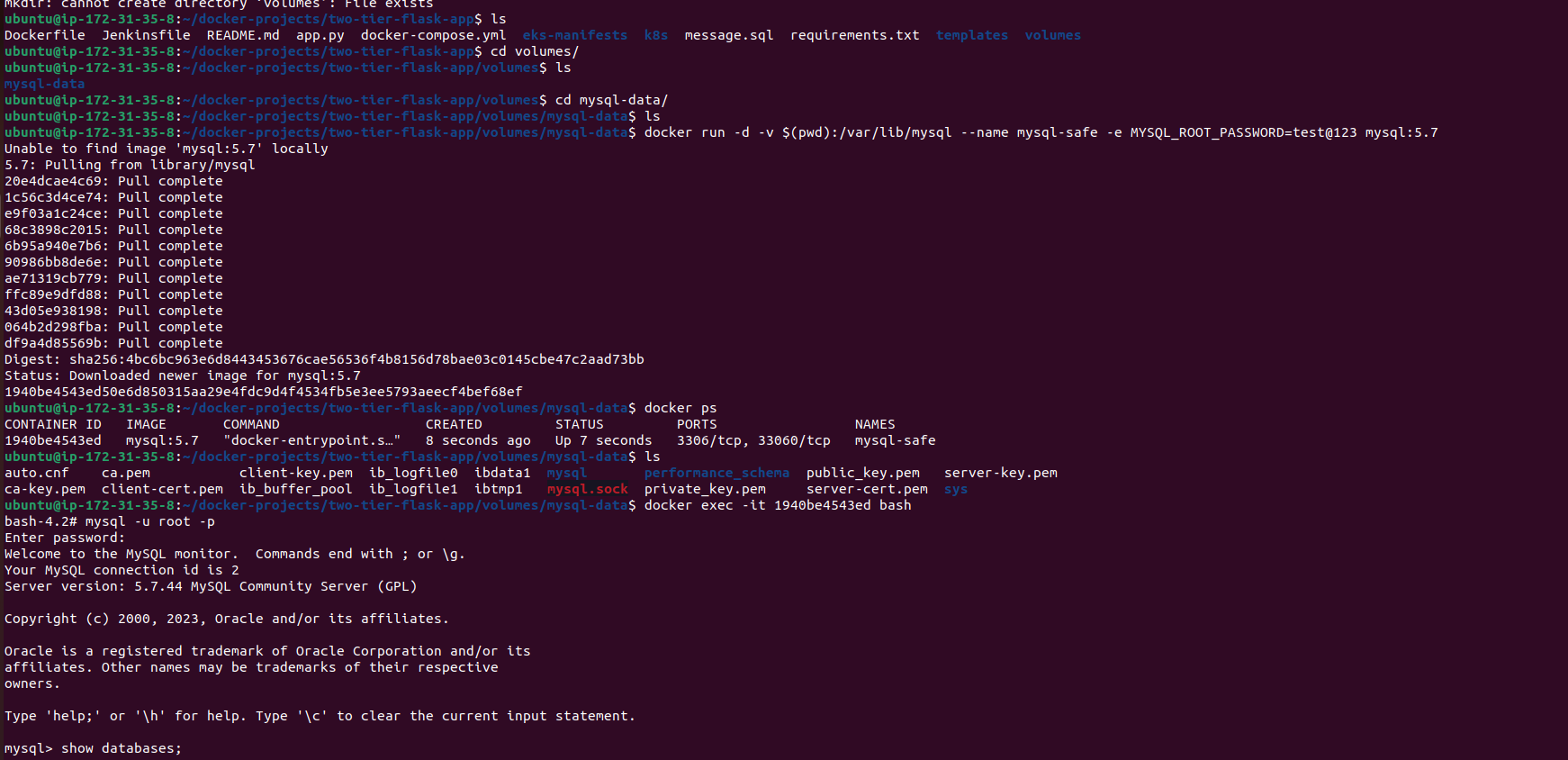
Step 2: Access the MySQL Container and Insert Data
docker exec -it mysql_container mysql -u root -p
CREATE DATABASE testdb;
USE testdb;
CREATE TABLE users (id INT AUTO_INCREMENT PRIMARY KEY, name VARCHAR(255));
INSERT INTO users (name) VALUES ('John'), ('Alice'), ('Bob');
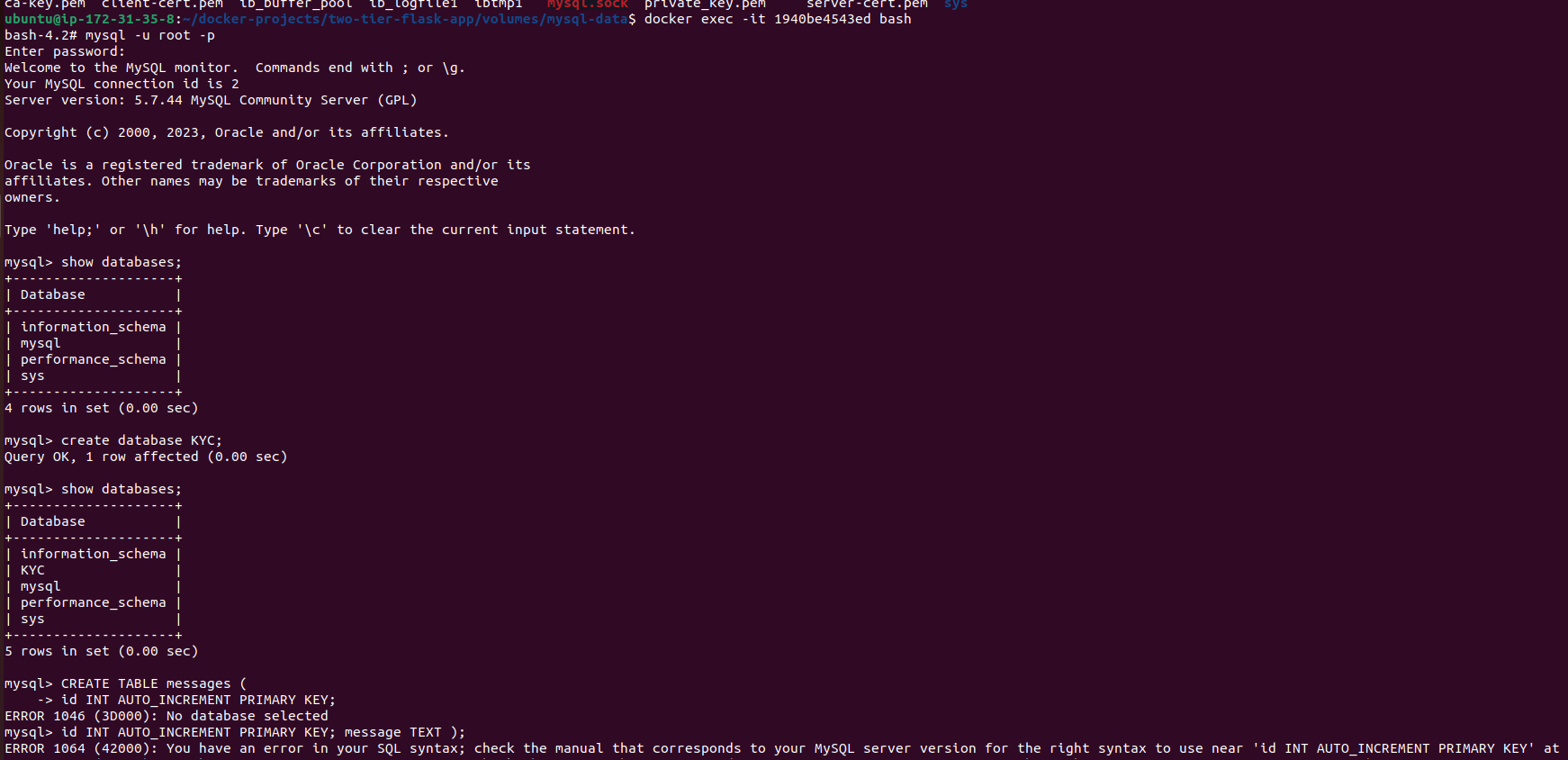
Step 3: Verify Data Persistence
USE testdb;
SELECT * FROM users;
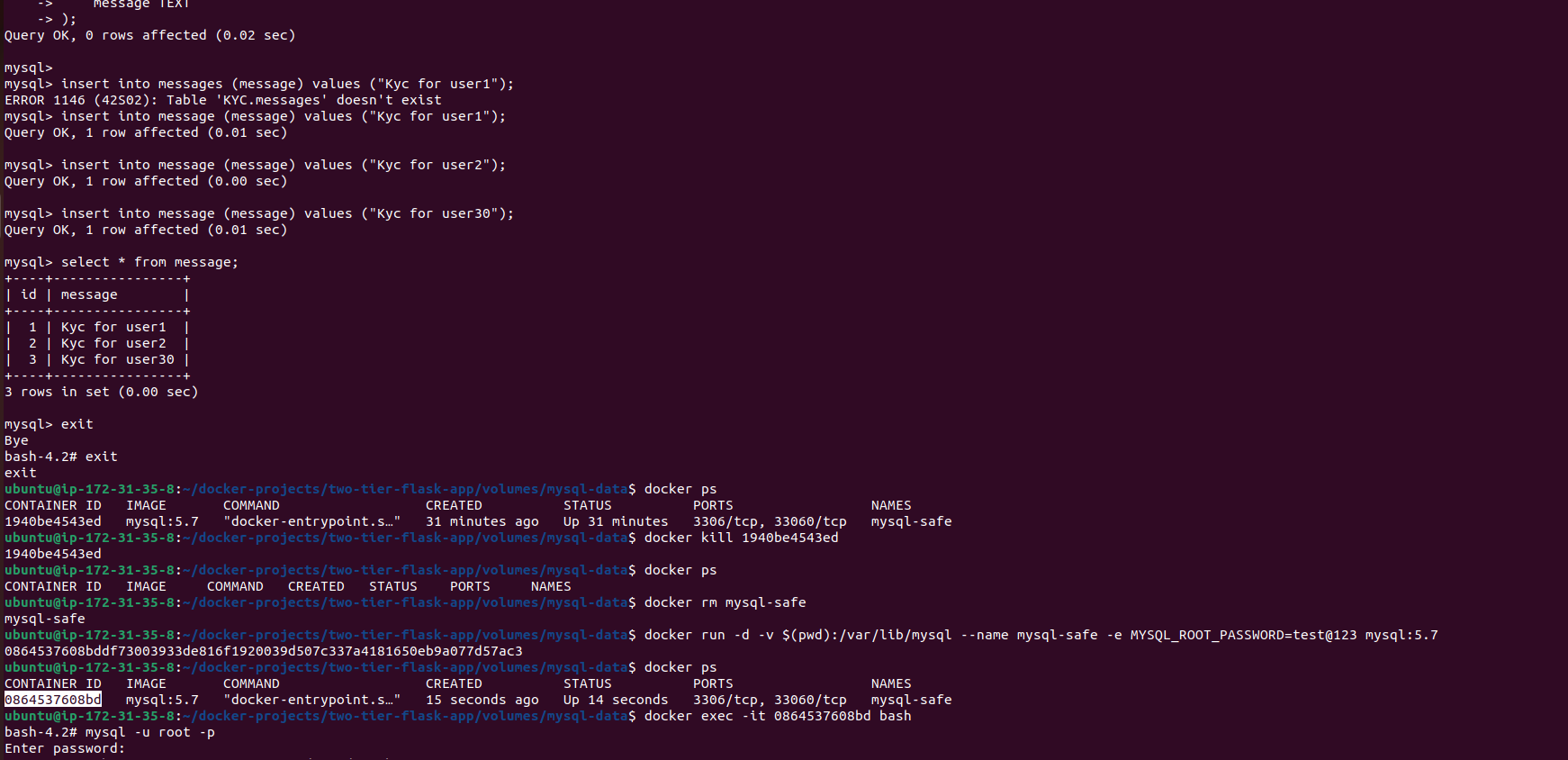
Step 4: Delete and Recreate the MySQL Container
docker stop mysql_container
docker rm mysql_container
Recreate the MySQL container with the same volume attached.
Step 5: Access the MySQL Container and Verify Data Persistence
docker exec -it mysql_container mysql -u root -p
USE testdb;
SELECT * FROM users;
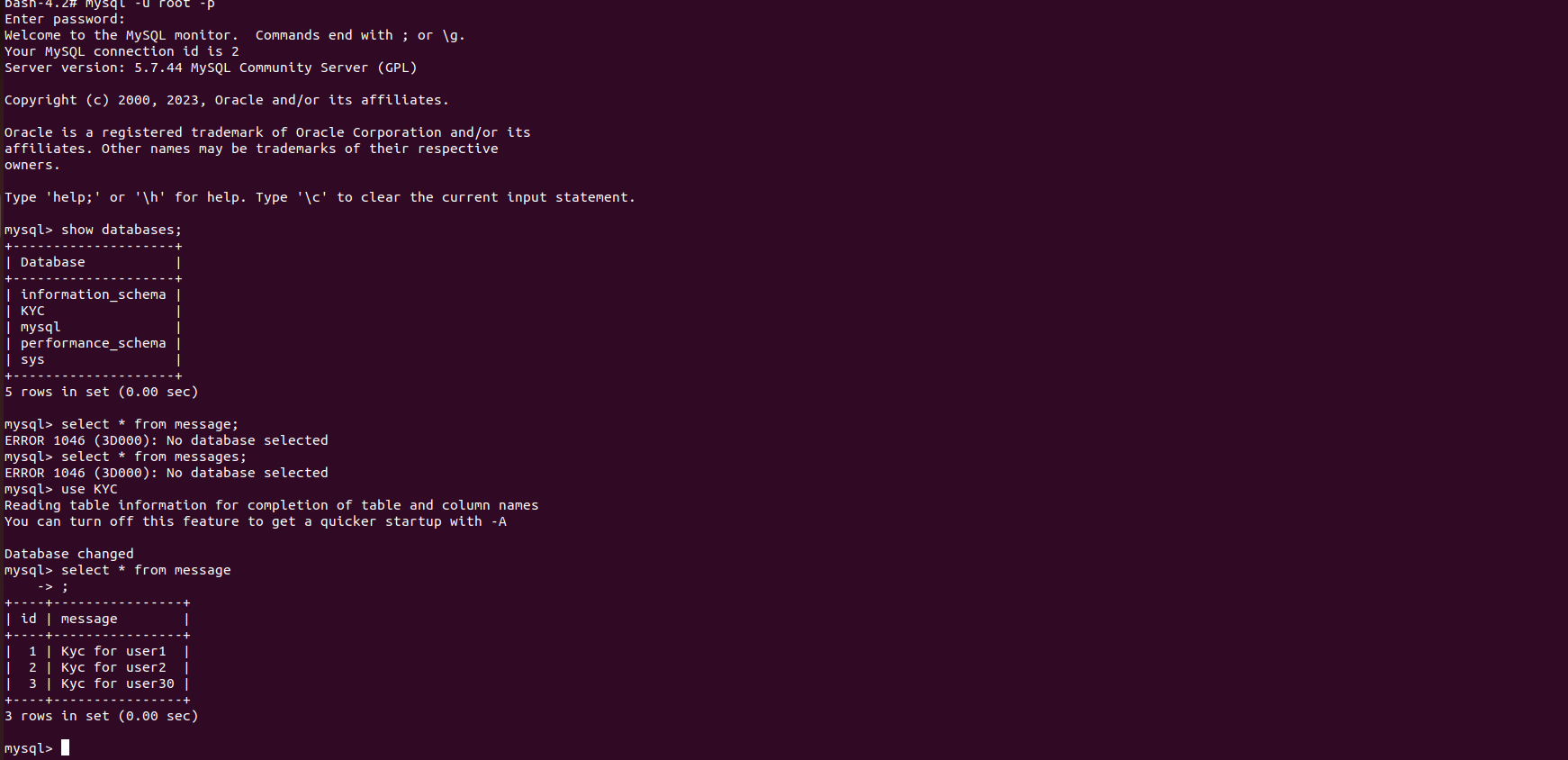
You should see the same data that was inserted earlier, demonstrating data persistence with Docker volumes.
7. Conclusion
Docker volumes play a crucial role in managing data persistence and sharing in containerized environments. By understanding the types of volumes available, how to create and use them effectively, and best practices for volume management, developers and operators can leverage Docker volumes to build robust and scalable containerized applications.
In conclusion, Docker volumes offer a powerful mechanism for managing data in Docker containers, enabling developers to build resilient and scalable applications with ease. By incorporating Docker volumes into their workflows and adhering to best practices, organizations can ensure data integrity, reliability, and portability in their containerized environments.
For more information about Docker volumes, please refer to the following URL: https://spacelift.io/blog/docker-volumes
Subscribe to my newsletter
Read articles from SWATHI PUNREDDY directly inside your inbox. Subscribe to the newsletter, and don't miss out.
Written by
